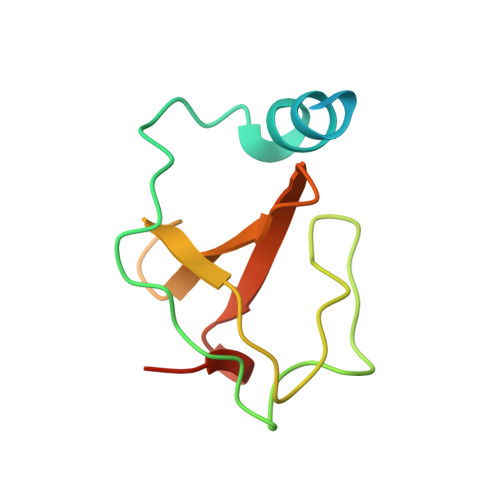Structure of a Helically Extended SH3 Domain of the T Cell Adapter Protein ADAP.
Heuer, K., Kofler, M., Langdon, G., Thiemke, K., Freund, C.(2004) Structure 12: 603-610
- PubMed: 15062083
- DOI: https://doi.org/10.1016/j.str.2004.02.021
- Primary Citation of Related Structures:
1RI9 - PubMed Abstract:
The adapter protein ADAP (FYB/SLAP-130) provides a critical link between T cell receptor (TCR) signaling and cell adhesion via the activation of integrins. The C-terminal 70 residues of ADAP show homology to SH3 domains; however, conserved residues of the fold are absent. An alignment and annotation of this domain has therefore been elusive. We have solved the three-dimensional structure of the ADAP C-terminal domain by NMR spectroscopy and show that it represents an altered SH3 domain fold. An N-terminal, amphipathic helix makes extensive contacts to residues of the regular SH3 domain fold, and thereby a composite surface with unusual surface properties is created. We propose this SH3 domain variant to be classified as a helically extended SH3 domain (hSH3 domain) and show that the ADAP-hSH3 domain can no longer bind conventional proline-rich peptides.
Organizational Affiliation:
Protein Engineering Group, Forschungsinstitut für Molekulare Pharmakologie and Freie Universität Berlin, Robert-Rössle-Strasse 10, 13125 Berlin, Germany.














